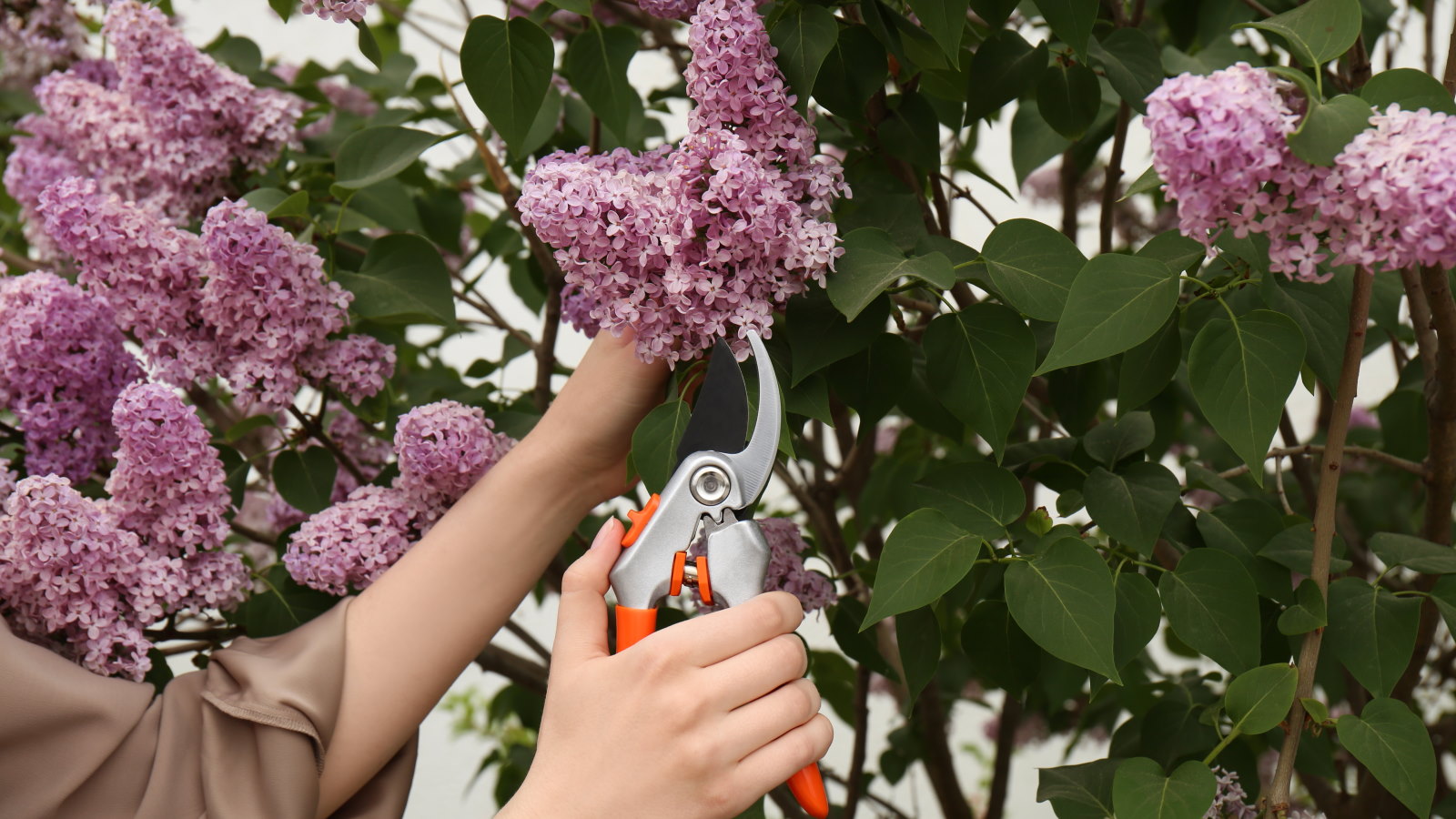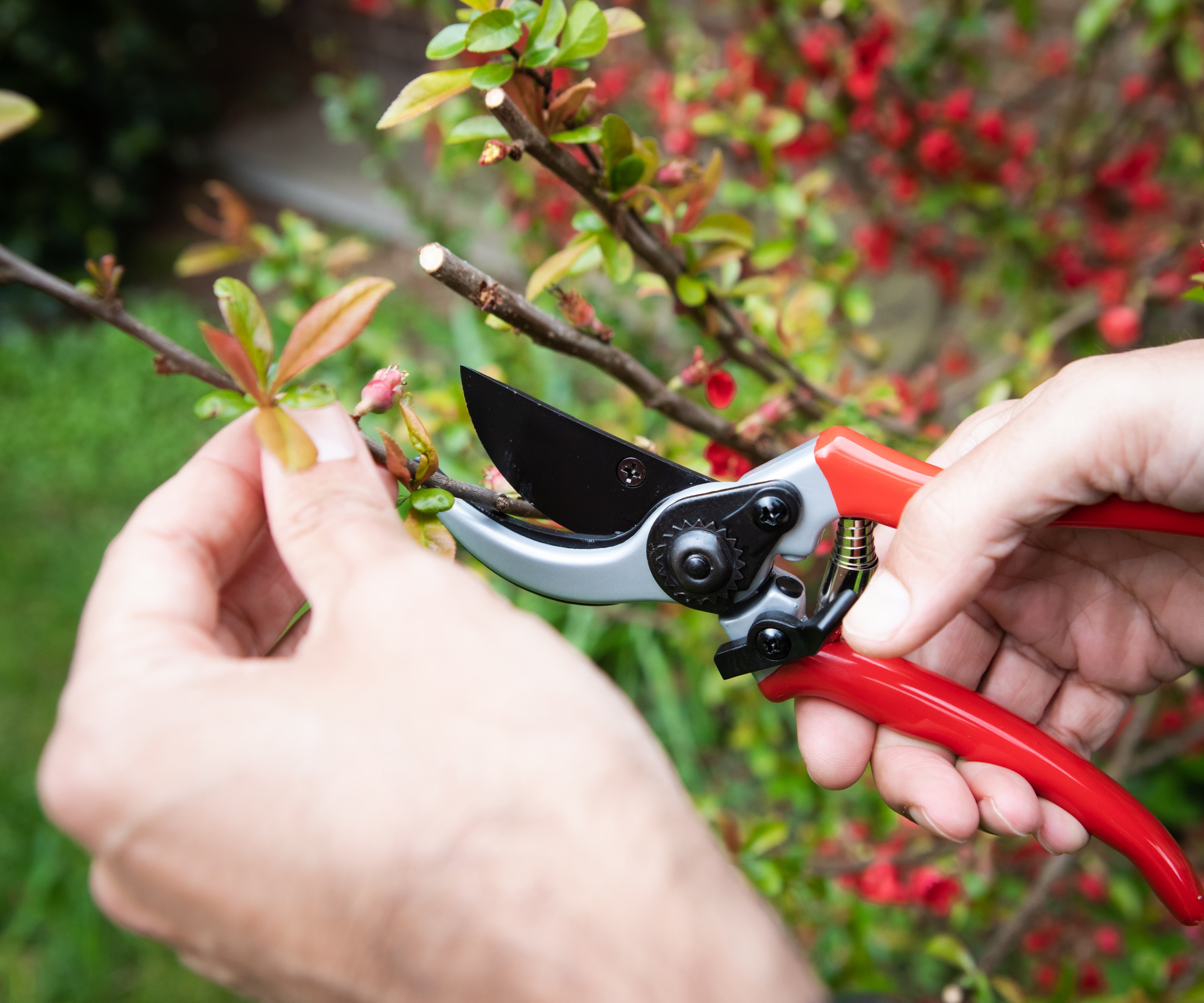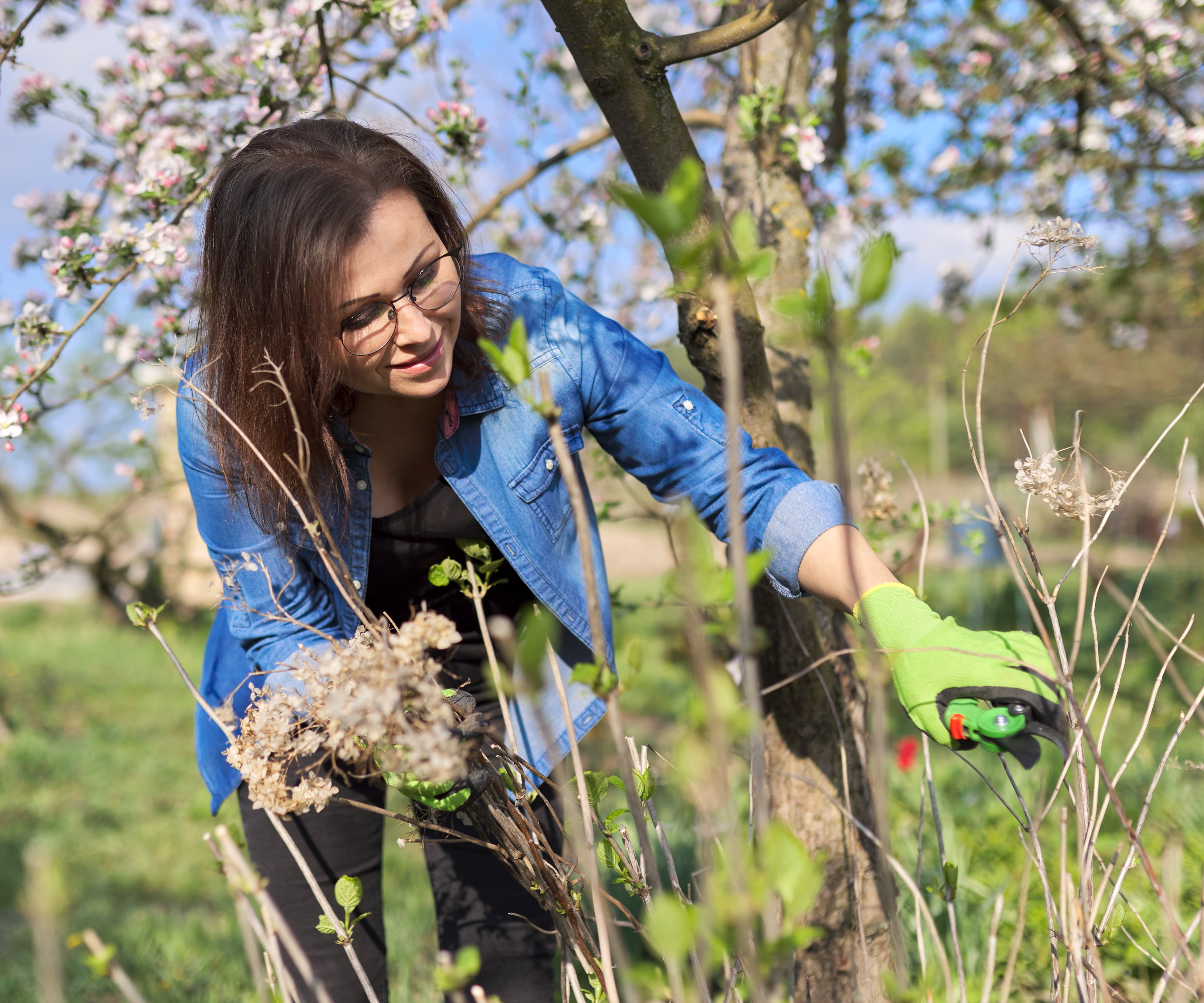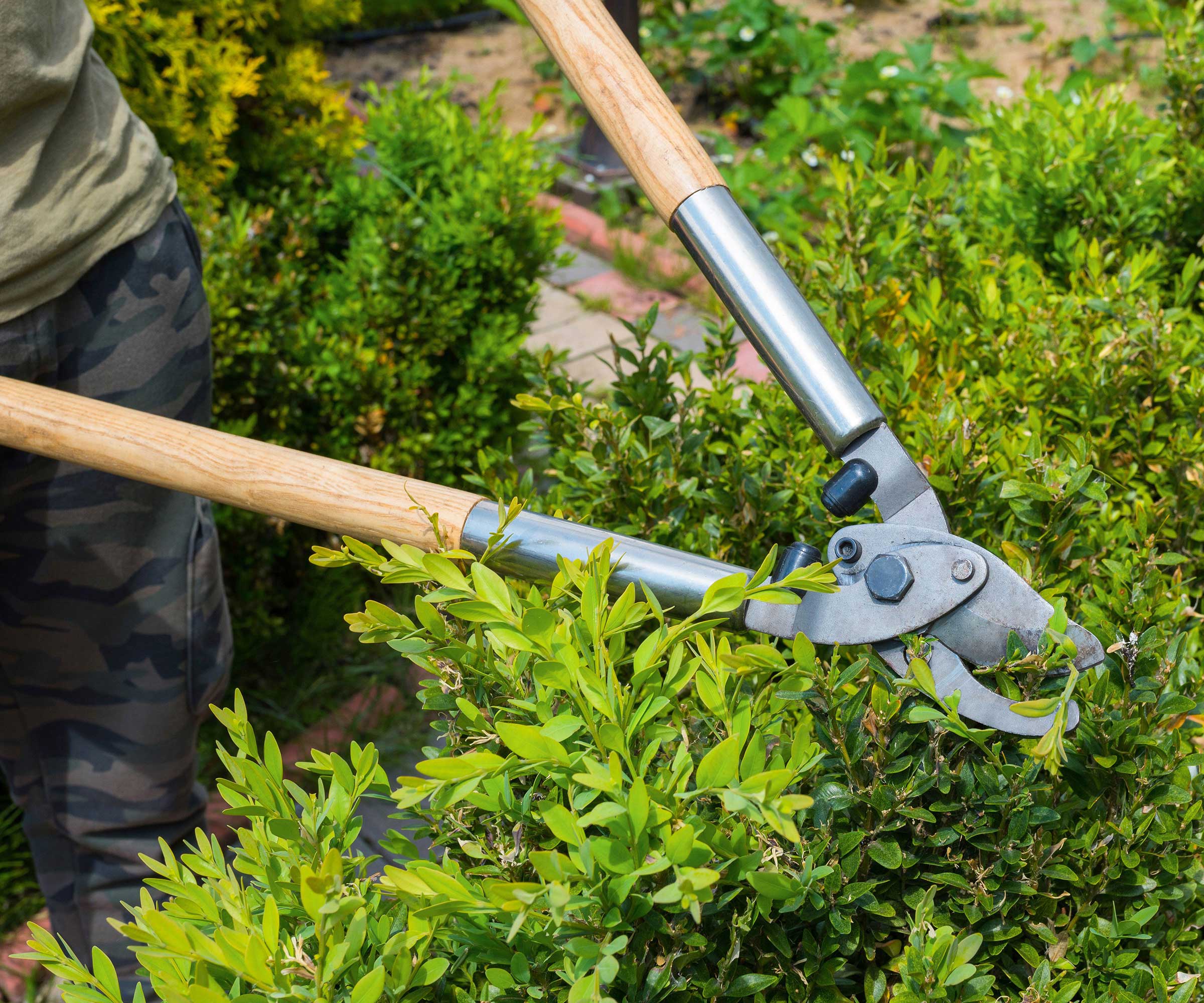
Pruning is an essential part of growing shrubs and knowing when to prune is an important aspect of ensuring any shrubs are healthy and look their best year after year. Trimming at the wrong time not only risks losing out on flowers, but you can leave the shrub vulnerable to damage from weather, pests, and diseases.
Shrub pruning was an integral annual task during my years working as a professional gardener in large, historic public gardens in the UK. I maintained many flowering fast-growing shrubs and evergreen topiary bushes - over 200 formal topiary shrubs in one particular garden - and pruned them at the correct time of year for the best displays the public could enjoy.
This guide to when to prune shrubs looks at several different types, outlining the best time to trim the shrubs back, and why, along with when to avoid pruning. I use my experience and hear from other garden experts to establish when the best time is to prune shrubs so yours remain healthy and flourishing.

When to prune flowering shrubs
‘Pruning shrubs at the right time improves their performance rather substantially,’ says renowned plant expert Sarah Raven. ‘A common mistake is treating all shrubs the same, regardless of their species.’ To help you avoid this pruning mistake, let's take a close look at when to prune different types of flowering shrubs.
When to prune spring flowering shrubs

Spring flowering shrubs are traditionally classed as ones that bloom before the middle of June. These beautiful shrubs provide glorious color from winter through spring and include the likes of rhododendrons, azaleas, camellias, lilacs, forsythia, deutzia, weigela, kerria, and many more.
The way the shrubs bloom determines the best time of year to prune them, along with when to avoid trimming. They bloom on old wood, the growth produced the previous season, and want to be given as much time as possible to form flower buds to carry next year’s display.
‘For shrubs in flower from November to June, prune as soon as they’ve stopped flowering,’ recommends Sarah Raven. ‘Doing so will allow their buds to form on existing branches, producing a further flurry of flowers.’
Pruning spring-flowering shrubs too late risks a lack of blooms the following spring and pruning them too early in the year means removing the buds that will carry the year's display.
When to prune summer flowering shrubs

Summer flowering shrubs flower from July to October and produce blooms on new wood produced that season.
Shrubs such as butterfly bush, hydrangea, Russian sage, spirea, fuchsia, and roses, are all best pruned in late winter or early spring during dormancy. This encourages a strong flush of growth in spring, from the food reserves the plants hold over winter, to carry that season’s flowers.
Avoid pruning in the middle of winter as frost may get into pruning wounds and leave the tree susceptible to pests and diseases. There are also risks with pruning summer-flowering shrubs in late summer or fall as Angela Slater, plant expert at Hayes Garden World, warns: ‘This can lead to a rush of new growth which won’t have the time to harden off before winter.
‘This new soft growth will be susceptible to becoming frosted and will then have to be pruned off in early spring.’
The ideal time to prune in spring is after the last frost for your US hardiness zone and just as the plant starts growing again for the new season.
When to prune evergreen shrubs

The best time to prune evergreen shrubs can vary depending on the type, however, early spring and late summer tend to be the best time to trim evergreen bushes.
Pruning in spring helps remove any winter damage and stimulates new growth to help the shrub thrive in summer. Spring pruning is recommended for trimming boxwood bushes and pruning laurel, holly, viburnum, and more. The exceptions to spring pruning are any evergreens that flower in spring, such as rhododendrons, azaleas, and camellias.
Steve Swanborough, gardening expert at Henchman, advises that evergreens like yew and privet prefer pruning in fall after the active growth has finished. Trimming in summer can harm such evergreens, as he warns: ‘Avoid pruning on hot or sunny days. Exposing inner leaves to direct sunlight can scorch them.
‘Similarly, pruning during a cold snap can stress the plant’s sensitive tissue. Instead, make sure to wait for an overcast, mild day to avoid causing unnecessary damage to the shrub.’
When to prune newly planted shrubs
Formative pruning of newly planted shrubs helps encourage the plant’s structure for years to come. Any new additions when landscaping with shrubs benefit from shaping during their formative years. Light pruning in early spring shapes the plant, removes damaged, diseased, or crossing shoots, and encourages buds to break lower down the stems.
Shop shrub pruning tools
A pruning set that includes anvil loppers, heavy-duty hedge shears and sharp soft grip bypass pruners - perfect for pruning a range of shrubs
A pair of quality pruning shears featuring a blade made of high-carbon steel that can cut up to 3/4" diameter sized branches. Ideal for trimming and shaping shrubs
A pair of professional pruning shears with quality hardened steel blades and forged aluminium alloy handles. Plus, all the parts are replaceable
FAQs
When should you not prune shrubs?
Avoid pruning shrubs during periods of extreme weather, including the hottest days of midsummer and in the middle of cold winters. Both extreme heat and cold can damage shrubs and leave them susceptible to pests and diseases. Pruning shrubs in fall is also not recommended as it encourages new growth when the plant wants to prepare for dormancy. The resulting flush of new growth gets damaged by the winter colds.
When should you prune old overgrown shrubs?
Overgrown shrubs are best pruned in late winter or early spring over a few years. Removing up to a third of the oldest branches each year is a proven way to rejuvenate an older and larger shrub.
An alternative is to cut an entire shrub to around six inches from the ground in early April to encourage replacement shoots. This method will not work for all shrubs but can be used on overgrown lilacs, forsythias, spireas, and dogwoods.
The simple one-third pruning rule is always worth considering when pruning shrubs. Taking care not to remove more than one-third of the shrub’s healthy growth helps maintain their health. Cutting away more than this can weaken shrubs and often result in them putting on lots of weak and straggly growth. This is why renovation pruning over several years is preferred to cutting older shrubs down to the ground.







